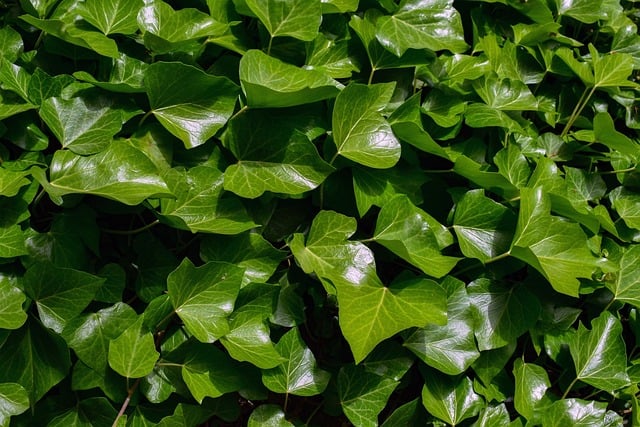English ivy is a popular houseplant known for its lush green leaves and ability to thrive in low light conditions. However, yellowing leaves can be a common problem for ivy owners.
There are several reasons for English ivy leaves turning yellow, including environmental stress, watering and soil conditions, light and temperature factors, nutrient deficiencies, pests, and diseases.
Understanding the causes of yellowing leaves is essential to revive your English ivy plant. Overwatering and poor soil drainage can lead to root rot, which can cause yellowing leaves. On the other hand, underwatering can cause dry and yellow leaves.
Light and temperature factors also play a crucial role in the health of English ivy plants. Too much or too little light can cause stress to the plant, leading to yellowing leaves. Nutrient deficiencies, pests, and diseases can also cause yellowing leaves.
Key Takeaways on English Ivy Leaves Turning Yellow”
- Yellowing leaves are a common problem for English ivy owners and can be caused by several factors, including environmental stress, watering and soil conditions, light and temperature factors, nutrient deficiencies, pests, and diseases.
- Overwatering and poor soil drainage can lead to root rot, while underwatering can cause dry and yellow leaves.
- Light and temperature factors, nutrient deficiencies, pests, and diseases can also cause yellowing leaves. It is essential to understand the causes of yellowing leaves to revive your English ivy plant.
More similar posts:
Understanding Ivy Yellowing
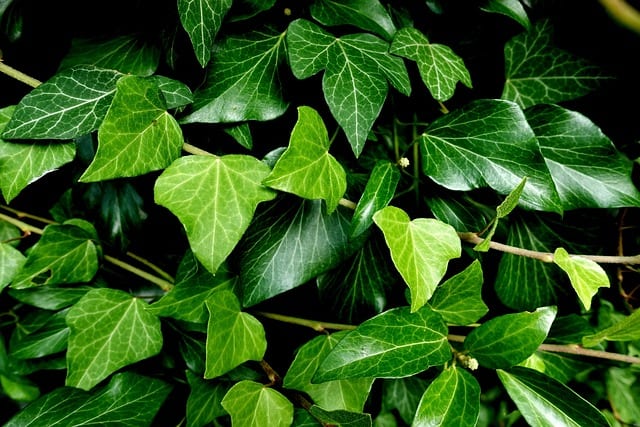
Yellowing leaves on English Ivy plants can be a sign of health issues, environmental stress, or natural growth cycles. In order to properly address the issue, it is important to understand the root cause of the yellowing leaves.
One of the most common causes of yellowing leaves on English Ivy is overwatering. When the roots of the ivy are constantly wet, they can become waterlogged and start to rot.
This can lead to a lack of oxygen and nutrients for the plant, causing the leaves to turn yellow and eventually fall off. To prevent overwatering, it is important to ensure that the soil is well-draining and that the ivy is not sitting in standing water.
Another possible cause of yellowing leaves on English Ivy is environmental stress. Ivy plants can be sensitive to changes in temperature, humidity, and light levels. Exposure to drafts, dry air, or high levels of fertilizer salts in the soil can all cause the leaves to turn yellow.
To prevent environmental stress, it is important to keep the ivy in a consistent environment with moderate temperatures and humidity levels.
Yellowing leaves on English Ivy can also be a natural part of the plant’s growth cycle. As the ivy grows, it will shed its older leaves to make room for new growth. This is a normal process and should not be cause for concern unless the yellowing leaves are accompanied by other signs of stress or disease.
In some cases, yellowing leaves on English Ivy can be a sign of disease. Fungal infections, such as root rot or leaf spot, can cause the leaves to turn yellow and eventually die. If you suspect that your ivy is suffering from a disease, it is important to take action quickly to prevent the spread of the infection.
Watering And Soil Conditions
Watering Requirements
English Ivy requires moderate watering with well-draining soil to thrive. Overwatering is the most common reason for yellow leaves on Ivy. Soggy soil reduces the oxygen supply in the soil, due to which the roots fail to respire and carry water and nutrients.
This makes the plant weak, causing the leaves to turn yellow. Check the soil before watering the plant. Insert a finger about an inch deep into the soil, and if it feels dry, it’s time to water. If it’s still moist, wait for a few more days before watering.
Soil Type and Drainage
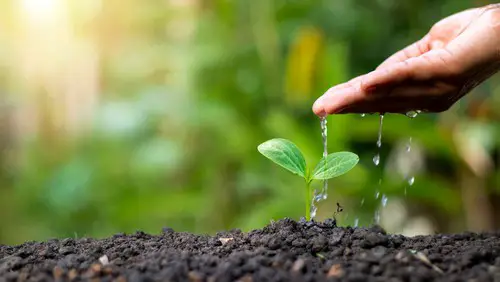
Well-draining soil is necessary for English Ivy to grow properly. Ivy cannot tolerate damp, slow-draining, and soggy soil around the roots for longer periods. The soil should be a mix of potting soil and perlite or sand to ensure proper drainage.
Ivy plants need a pot with drainage holes in the base to allow excess water to escape. If the pot doesn’t have drainage holes, it’s recommended to transfer the plant to a pot that does.
To ensure proper drainage, it’s best to use a well-draining soil mix. A mix of potting soil and perlite or sand can help the soil drain better. If the soil doesn’t drain well, the plant’s roots can become waterlogged, leading to root rot and yellow leaves.
Frequency of Watering
Watering frequency depends on several factors such as the size of the pot, the temperature, and humidity levels. It’s important to check the soil moisture level before watering.
Overwatering can cause saturated soil, which can lead to root rot and yellow leaves. Underwatering can also cause yellow leaves as the plant is not getting enough moisture. It’s recommended to water the plant when the soil is dry to the touch, but not bone dry.
Light and Temperature Factors
Sunlight Requirements
English ivy plants require bright, indirect light to grow well. They can tolerate some direct sun, but too much can cause their leaves to turn yellow and dry out.
If the plant is not getting enough light, it can also cause yellowing of the leaves. It is important to place the plant in an area where it can receive adequate light without being exposed to direct sunlight.
Temperature Conditions
Temperature plays a crucial role in the growth and health of English ivy. The ideal temperature range for these plants is between 60°F to 75°F (15°C to 24°C).
Temperatures below 50°F (10°C) or above 80°F (27°C) can stress the plant and cause the leaves to turn yellow. It is important to avoid exposing these plants to cold drafts or hot air vents, as they can cause temperature fluctuations and stress the plant.
In the winter, it is important to keep English ivy away from windows or doors that can cause the temperature to drop too low. Low humidity levels can also cause yellowing of the leaves. It is important to maintain a consistent temperature and humidity level to keep the plant healthy.
English ivy can also tolerate shade, but it may not grow as well as it would in bright, indirect light. If the plant is not getting enough light, it may need supplemental lighting to thrive. It is important to monitor the temperature and lighting conditions to ensure the plant is getting the optimal conditions for growth.
Nutrient Deficiencies
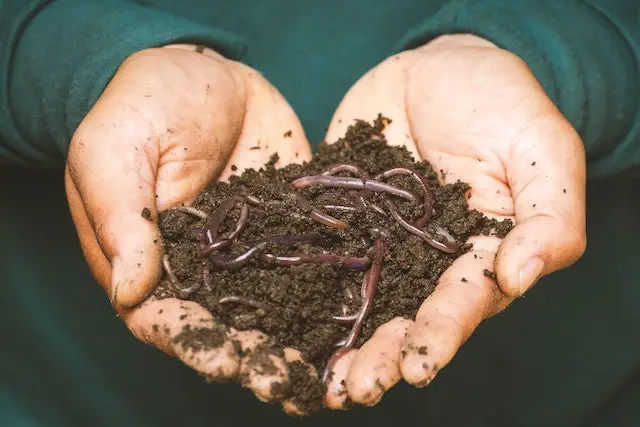
Yellowing leaves in English Ivy can also be a sign of nutrient deficiencies. Lack of nutrients, such as iron, nitrogen, potassium, and magnesium, can cause leaves to turn yellow.
Iron and Nitrogen Deficiency
Iron and nitrogen deficiency are the most common nutrient deficiencies that cause yellowing leaves in plants. Iron is an essential nutrient for plants, and its deficiency can cause yellowing of leaves.
Nitrogen is also an essential nutrient that plants need to grow healthy leaves. Nitrogen deficiency can cause yellowing of leaves, especially in older leaves. To provide your English Ivy with the necessary nutrients, use a balanced fertilizer once a month during the growing season.
Potassium and Magnesium Deficiency
Potassium and magnesium are also essential nutrients that plants need to grow healthy leaves. A lack of potassium can cause yellowing of leaves, especially at the leaf margins.
Magnesium deficiency can cause yellowing of leaves between the veins. To prevent potassium and magnesium deficiency, use a fertilizer that contains these nutrients.
It is also important to maintain the pH level of the soil. English Ivy prefers a slightly acidic soil with a pH level of 6.0 to 7.5. If the pH level of the soil is too high or too low, it can affect the plant’s ability to absorb nutrients.
Pests and Diseases
English ivy is a hardy plant that is generally resistant to pests and diseases. However, certain environmental conditions or improper care can make the plant vulnerable to infestations and infections. In this section, we will discuss some of the most common pests and diseases that can cause English ivy leaves to turn yellow.
Common Pests
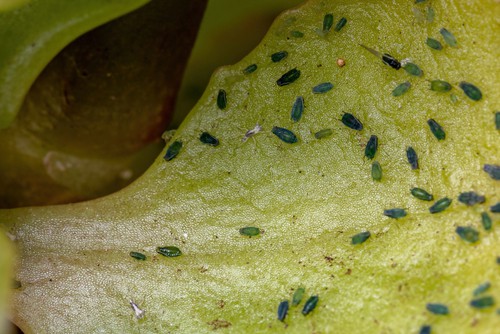
1. Spider Mites
Spider mites are tiny pests that can cause significant damage to English ivy plants. They feed on the sap of the plant, causing yellowing and wilting of the leaves. They are usually found on the undersides of the leaves and can be identified by the fine webbing they produce. To control spider mites, use insecticidal soap or neem oil.
2. Mealybugs
Mealybugs are another common pest that can infest English ivy. They are small, white insects that secrete a waxy substance that looks like cotton. They feed on the sap of the plant, causing yellowing and stunted growth. To control mealybugs, use insecticidal soap or neem oil.
3. Scale
Scale insects are small, oval-shaped pests that attach themselves to the stems and leaves of English ivy. They feed on the sap of the plant, causing yellowing and wilting of the leaves. They can be identified by their hard, shell-like covering. To control scale, use insecticidal soap or neem oil.
4. Aphids
Aphids are small, soft-bodied insects that feed on the sap of the plant. They can cause yellowing and curling of the leaves, as well as stunted growth. To control aphids, use insecticidal soap or neem oil.
Common Diseases
1. Root Rot
Root rot is a fungal disease that can affect English ivy plants. It is caused by overwatering or poor drainage, which leads to the roots becoming waterlogged. The plant may exhibit yellowing and wilting of the leaves, as well as stunted growth. To prevent root rot, ensure that the plant has adequate drainage and is not overwatered.
2. Fungal and Bacterial Infections
Fungal and bacterial infections can also cause yellowing of the leaves in English ivy plants. These infections can be caused by poor air circulation, high humidity, or overwatering.
The plant may exhibit yellowing and wilting of the leaves, as well as brown spots or lesions. To control fungal and bacterial infections, remove infected leaves and improve air circulation around the plant.
3. Whiteflies
Whiteflies are small, winged insects that feed on the sap of the plant. They can cause yellowing and wilting of the leaves, as well as stunted growth. To control whiteflies, use insecticidal soap or neem oil.
Care and Maintenance of Ivy
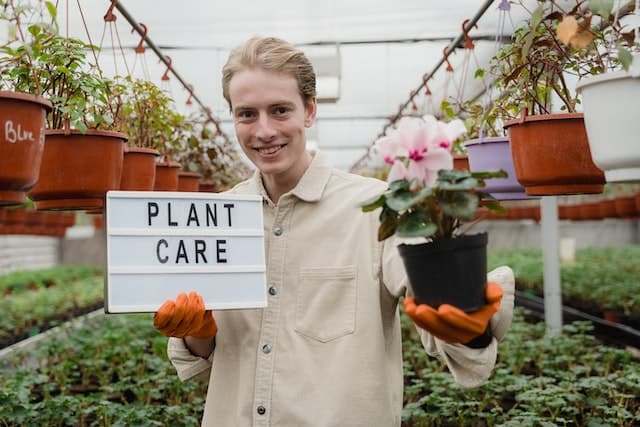
English Ivy is an attractive houseplant that requires minimal care and maintenance. However, yellowing leaves can be a sign of underlying problems. To keep the plant healthy and vibrant, proper care and maintenance are essential.
Repotting and Pruning
Repotting is necessary when the plant outgrows its current container. The roots of the plant need space to grow, and a larger pot can provide that. When repotting, it is important to use a potting mix that drains well. Ivy prefers soil that is moist but not soggy.
Pruning is also an important part of maintaining the health of the plant. Yellow leaves should be pruned to prevent the spread of disease. Pruning also encourages new growth and helps to maintain the shape of the plant.
Treatment and Prevention
Yellowing leaves can be caused by several factors, including environmental stress, overwatering, and underwatering. To prevent yellowing leaves, it is important to provide the plant with the proper environment. Ivy prefers a humid environment with plenty of indirect sunlight. Misting the leaves can help to increase humidity levels.
Overwatering can lead to root rot and yellowing leaves. Ivy prefers soil that is moist but not waterlogged. To prevent overwatering, it is important to use a saucer to catch excess water. The plant should be allowed to drain before placing it back in the container.
Underwatering can also cause yellowing leaves. Ivy should be watered when the top inch of soil is dry. The plant should be watered thoroughly, and excess water should be allowed to drain.
Leaf spots and brown leaves can be a sign of disease or insect infestation. Infected roots should be removed, and the plant should be treated with a fungicide or insecticide.
Fertilizing can also help to prevent yellowing leaves. Ivy prefers a balanced fertilizer that is high in nitrogen. Fertilizer should be applied every two to three months during the growing season.
Frequently Asked Questions
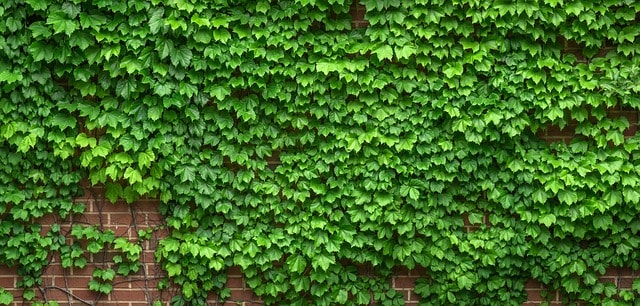
How can I prevent my English Ivy leaves from turning yellow?
To prevent yellowing of English Ivy leaves, it is essential to avoid overwatering and underwatering. Ensure that the soil is well-draining and the plant is not sitting in water.
Additionally, avoid exposing the plant to high levels of fertilizer salts, cold drafts, or hot air vents, as they can cause stress and yellowing of leaves. Regularly inspect the plant for pests and diseases and provide adequate light and humidity levels.
What causes English Ivy leaves to turn yellow with brown spots?
Yellowing of English Ivy leaves with brown spots can be due to fungal infections, such as leaf spot or anthracnose. These infections can occur due to high humidity levels, overwatering, or poor air circulation.
It is essential to remove the affected leaves and improve the plant’s growing conditions to prevent further spread of the infection.
Why are my Swedish Ivy leaves turning yellow?
Swedish Ivy leaves can turn yellow due to overwatering, underwatering, or lack of nutrients. Ensure that the plant is not sitting in water and the soil is well-draining. Provide adequate light and humidity levels and fertilize the plant regularly to prevent yellowing of leaves.
What are the reasons for Devil’s Ivy leaves turning yellow?
Devil’s Ivy leaves can turn yellow due to overwatering, underwatering, or lack of nutrients. Additionally, the plant can be stressed due to low light levels or cold drafts. Ensure that the plant is not sitting in water and the soil is well-draining. Provide adequate light and humidity levels and fertilize the plant regularly to prevent yellowing of leaves.
How do I revive my indoor plant with yellow leaves?
To revive an indoor plant with yellow leaves, it is essential to identify the cause of yellowing and address it accordingly. If the cause is overwatering, reduce watering frequency and ensure that the soil is well-draining.
If the cause is underwatering, increase watering frequency and ensure that the soil is moist. Additionally, provide adequate light and humidity levels and fertilize the plant regularly to promote healthy growth.
Is misting necessary for English Ivy or can it cause yellowing of leaves?
Misting can be beneficial for English Ivy as it can increase humidity levels and prevent dryness. However, excessive misting can cause yellowing of leaves due to waterlogging.
It is essential to mist the plant moderately and ensure that the foliage is not wet for an extended period. Additionally, provide adequate air circulation to prevent fungal infections.

Hey, I’m Lisa and I’ve been an avid gardener for over 30 years. I love writing, talking and living in the garden! Feel free to connect with me on my socials below

